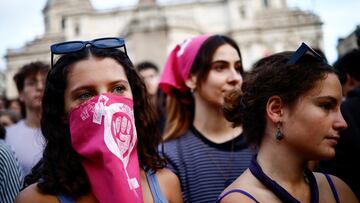What is the 4B movement? Surging interest in the trend from South Korea
A more than a decade old feminist movement from South Korea is inspiring new supporters across the Pacific after genders key role in electing Donald Trump.


The 4B movement, a feminist initiative originating from South Korea, has recently gained significant attention in the United States following Donald Trump’s re-election as president. According to Google Trends, the search has never been more popular in the US.
So what is it and why is it important after the US election?
The 4B movement emerged in South Korea around 2015-2016 as a response to deep-seated gender inequality and violence against women. The Asian nation is infamous for its poor treatment of women, and this movement aimed to strike back.
The term “4B” represents four Korean words, each starting with “bi,” meaning “no”. These four principles are:
- Bisekseu: No sex with men
- Bichulsan: No childbirth
- Biyeonae: No dating men
- Bihon: No marriage to men
The 4B philosophy gained momentum following incidents of violence against women and as part of the broader #MeToo movement.
Why it is relevant for the US
The re-election of Donald Trump, with an expectation of roll backs for the rights of women to their own bodies, has encouraged the pushback. Though it was not on the Republican national platform, conservative judges overturned federal abortion protections in 2022. The rights have returned to the states, with two dozen immediately banning the practice. The secretive Project 2025 has also detailed how abortion can be banned nationally during a Trump second term.
Related stories

How abortion laws have changed since Donald Trump won election

Swift seems to really hate Donald Trump
Gender was a key factor in voting patterns in the last election. There was a 10 percentage point gender gap in votes for Democrat Kamala Harris and Republican Donald Trump:
Women voters:
- 54% of women voted for Kamala Harris
- 44% of women voted for Donald Trump
Male voters:
- 44% of men voted for Kamala Harris
- 54% of men voted for Donald Trump
It was expected that women would turnout in much larger numbers for Democrats, but this didn’t materialise. The reaction to the result could encourage women to take more radical measures against a federal government that is likely to put further restrictions upon them.
Complete your personal details to comment